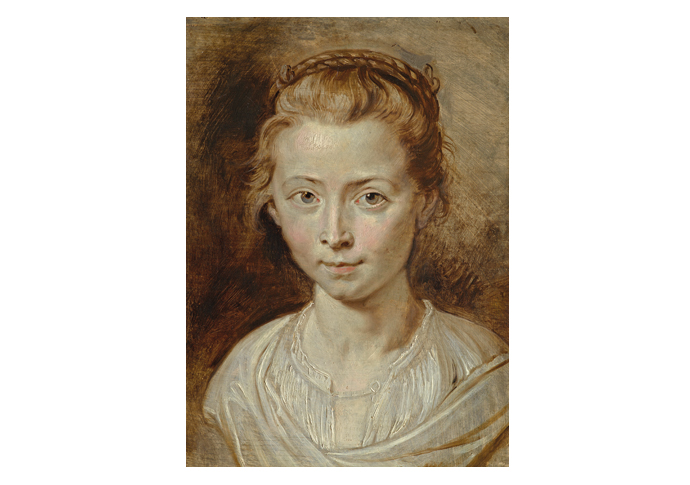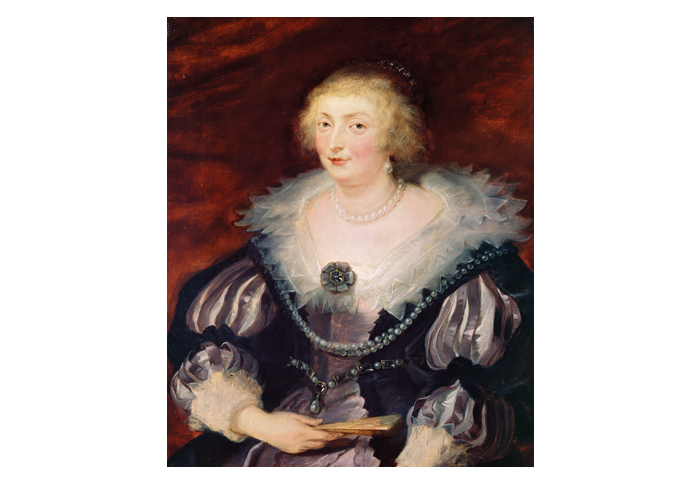Rubens revisited
Show featuring over 40 paintings and drawings ‘reveals the varied and important place occupied by women, both real and imagined’ for artist
Thursday, 7th December 2023 — By John Evans

Peter Paul Rubens, Clara Serena Rubens, the Artist’s Daughter, c1620-3, oil on panel, 36.2 x 26.4cm, private collection
A MODEST portrait by the artist, lent from a private collection, is not merely a highlight but almost a definition of the subtlety and poignancy of the exhibition running at Dulwich Picture Gallery, Rubens & Women*.
Over 40 paintings and drawings feature in a show which, “…reveals the varied and important place occupied by women, both real and imagined” for Peter Paul Rubens (1577-1640).
But it is the Portrait of Clara Serena Rubens, his daughter and first child with Isabella Brant, which immediately gives the lie to a long-held view that the Flemish master was stuck on one view of female form.
The term Rubenesque, as meaning a fuller or more rounded body, may have found its way into prestigious dictionaries, but this show alone should now see an end to that as both simplistic and anachronistic.
The picture here of Clara, who was to die just short of her 13th birthday not long after its completion, is lively and emotionally personal.
It hangs in the opening room of the exhibition, together with a portrait of Isabella Brant, on loan from the Uffizi gallery, Florence, and a full-length portrait of Marchesa Maria Serra Pallavicino from 1606 demonstrating Rubens’s meticulous mastery of detail, particularly, in this case, of her ruff and robes.
One of Dulwich’s own Rubens, the 1625 Portrait of a Lady remains a matter of mystery as to the sitter and is, apart from her face, incomplete. Yet it shows how he captured an identity with ease. Nearby is a loan from Charles III’s collection, of another unnamed woman, of which co-curator Dr Amy Orrock notes in an extensive show catalogue: “Rubens was one of the best portraitists of his time. This is especially evident in the affectionate likenesses he made of the members of his immediate and extended family, all of which display an astonishing sense of vitality and an almost palpable sense of presence.”

Peter Paul Rubens, Portrait of a Lady, c1625, oil on panel, 79.7 x 65.7cm, courtesy Dulwich Picture Gallery
The sitter was once thought to have been Rubens’s second wife Helena Fourment but now, possibly, her sister.
What is known is that the artist turned to family and friends as models, often for religious works. Also that portraiture was not what he wanted as his main focus.
Nevertheless, of the drawings, a clear highlight is a black and red chalk, again from the Uffizi and most likely being exhibited in the UK for the first time, Young Woman Looking Down (Study for head of St Apollonia),1628.
And still with religious subjects, one of the finest paintings here is The Lamentation from 1614 and though the lifeless body of Christ sets the scene, the gallery notes “…it is the women who model how we are to respond to this heart-breaking sight. Gazing at Christ, Mary Magdalene pulls at her hair in distress. The Virgin cradles Christ’s body and tenderly closes his eyes. At his feet are The Three Maries… They weep, pray, and look towards Heaven.”
The exhibition shows a true variety and versatility, with drawings, paintings and impressive oil sketches.
“Collectively, these works reveal tender and unexpected narratives of faith, love and artistic inspiration,” Dr Orrock says. And her co-curator Dr Ben van Beneden adds: “…it will encourage visitors to take the time to really consider each work, and to look beyond certain clichés. It will highlight the tenderness and empathy with which Rubens depicted not only his family, but many of his female figures”.
A final room successfully demonstrates the spectacular side to Rubens’s visions, with three outstanding paintings: from Dulwich, Venus Mars and Cupid, c1635; from Dresden, Diana Returning from the Hunt, c1623; and from the Prado, The Birth of the Milky Way, c1636-38. This latter, major, work was part of his commission for Philip IV of Spain comprising 60 mythological paintings for the king’s hunting lodge.
* At Dulwich Picture Gallery, Gallery Road, SE21 7AD until January 28. Tickets and details www.dulwichpicturegallery.org.uk